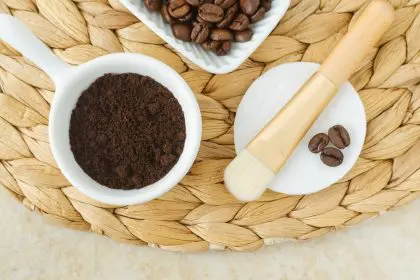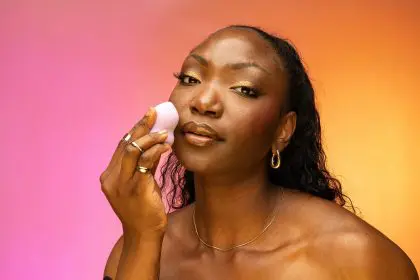The mirror doesn’t lie, and for many people approaching their thirties and beyond, it reveals a truth they’d rather avoid. Fine lines appear seemingly overnight, deeper creases settle into once-smooth skin, and the youthful plumpness that defined their complexion begins to fade. The beauty industry responds with an endless parade of expensive serums, invasive procedures, and miracle treatments that promise to turn back time.
Yet hidden beneath the marketing noise lies a simple biological truth that most people overlook. The secret to reversing visible signs of aging doesn’t require expensive dermatologist visits or department store splurges. It lies in understanding how collagen actually works in the body and leveraging a specific approach that triggers the skin’s natural repair mechanisms from within.
This method doesn’t involve slathering collagen creams on the surface or swallowing expensive supplements that may never reach their intended destination. Instead, it focuses on activating the body’s own collagen production system through a targeted approach that delivers visible results in just six weeks.
Understanding collagen’s role in skin aging
Collagen serves as the scaffolding that keeps skin firm, plump, and resilient. This protein makes up roughly 75 percent of skin’s dry weight, forming a network of fibers that provide structure and elasticity. When collagen levels are high, skin bounces back from expressions and maintains its smooth appearance. As these levels decline, the skin loses its ability to snap back into place, leading to the formation of permanent lines and wrinkles.
The natural aging process begins reducing collagen production around age 25, with levels dropping by approximately one percent each year thereafter. By age 50, most people have lost nearly half of their original collagen stores. This decline accelerates due to factors like sun exposure, smoking, poor nutrition, and chronic stress, explaining why some people show signs of aging much earlier than others.
Traditional approaches to collagen replacement often miss the mark because they focus on external application or oral supplementation without addressing the underlying production mechanisms. Topical collagen molecules are too large to penetrate the skin’s protective barrier, while oral supplements must survive digestion and compete with other bodily functions for absorption and utilization.
The overlooked collagen activation method
The secret lies in stimulating the body’s natural collagen synthesis pathways through targeted micro-trauma and recovery cycles. This approach works by creating controlled, microscopic damage to the skin that triggers the body’s repair response, flooding the area with new collagen and elastin fibers. Unlike harsh treatments that cause visible damage, this method works at a cellular level to promote regeneration without causing inflammation or extended recovery periods.
The process begins with understanding that skin responds to specific types of stimulation by ramping up its production of structural proteins. When the skin detects minor damage or stress, it activates fibroblast cells responsible for manufacturing collagen. These cells work overtime to repair and strengthen the affected area, often producing more collagen than was originally present.
This natural response explains why certain skincare techniques that seem counterintuitive actually produce remarkable results. The key is finding the right balance between stimulation and recovery, allowing the skin to rebuild itself stronger and more resilient than before.
Week 1-2: Preparing the foundation
The first phase focuses on preparing the skin for accelerated collagen production by optimizing cellular function and removing barriers to regeneration. This involves establishing a consistent routine that supports the skin’s natural repair mechanisms while avoiding common mistakes that interfere with collagen synthesis.
Proper hydration becomes crucial during this phase, as collagen production requires adequate water levels to function efficiently. Dehydrated skin cannot produce new collagen effectively, regardless of other interventions. The goal is to achieve optimal hydration at the cellular level, not just surface moisture that evaporates quickly.
Nutrition plays an equally important role, as the body needs specific building blocks to manufacture collagen. Vitamin C acts as a cofactor in collagen synthesis, while amino acids like glycine, proline, and hydroxyproline provide the raw materials for new protein formation. Zinc and copper serve as essential minerals in the collagen production process.
Sleep quality directly impacts collagen production, as the body performs most of its repair work during deep sleep stages. Growth hormone levels peak during sleep, triggering cellular regeneration processes throughout the body, including collagen synthesis in the skin. Consistent, quality sleep becomes non-negotiable for anyone serious about improving their skin’s appearance.
Week 3-4: Activating collagen production
The second phase introduces the core collagen activation technique that sets this approach apart from conventional methods. This involves using specific tools and techniques that create controlled micro-stimulation in the skin, triggering the collagen production response without causing visible damage or requiring recovery time.
The technique centers around using fine, sterile needles or specialized tools to create microscopic channels in the skin’s surface. These tiny punctures are virtually invisible to the naked eye but send powerful signals to the skin’s repair systems. The controlled trauma activates fibroblast cells, which immediately begin producing new collagen to heal and strengthen the affected areas.
Temperature variation can enhance this process by further stimulating cellular activity. Alternating between cool and warm temperatures causes blood vessels to contract and dilate, increasing circulation and nutrient delivery to the treatment areas. This enhanced blood flow carries oxygen and building blocks necessary for collagen production while removing metabolic waste that could interfere with the process.
The frequency and intensity of treatments must be carefully calibrated to avoid overwhelming the skin’s repair systems. Too much stimulation can trigger inflammatory responses that actually break down collagen faster than it can be produced. The optimal approach involves regular, gentle treatments that maintain a consistent state of controlled regeneration.
Week 5-6: Maximizing results
The final phase focuses on optimizing the collagen production process and maximizing visible improvements. By this point, the skin’s repair mechanisms are operating at peak efficiency, and the focus shifts to supporting continued production while protecting newly formed collagen from degradation.
Advanced techniques can be introduced during this phase to target specific areas of concern. Different regions of the face respond to varying levels of stimulation, with thicker skin around the jaw and cheeks tolerating more intensive treatments than delicate areas around the eyes. Customizing the approach based on skin thickness and sensitivity ensures optimal results without adverse effects.
Antioxidant support becomes increasingly important as collagen production ramps up. The cellular activity involved in protein synthesis generates free radicals that can damage both existing and newly formed collagen. Strategic use of antioxidants helps protect the skin’s investment in new collagen while supporting continued production.
Sun protection takes on critical importance during this phase, as UV radiation can quickly undo weeks of progress by breaking down newly formed collagen fibers. Even brief sun exposure without proper protection can significantly impact results, making consistent sunscreen use absolutely essential.
Supporting collagen from within
While external stimulation triggers collagen production, internal support ensures the body has everything it needs to maintain this accelerated synthesis. This involves optimizing nutrition, supplementation, and lifestyle factors that directly impact the skin’s ability to produce and maintain collagen.
Protein intake becomes particularly important, as collagen is essentially a specialized protein structure. The body requires adequate amino acid supplies to manufacture new collagen, and deficiencies in key building blocks can limit production regardless of external stimulation. Quality protein sources provide the full spectrum of amino acids needed for optimal collagen synthesis.
Healthy fats play a crucial role in maintaining skin barrier function and supporting cellular membranes involved in collagen production. Omega-3 fatty acids help reduce inflammation that can interfere with collagen synthesis, while providing building blocks for healthy cell membranes throughout the skin.
Stress management directly impacts collagen levels, as chronic stress elevates cortisol levels that break down existing collagen and interfere with new production. The stress hormone cortisol essentially works against collagen by promoting protein breakdown and inhibiting synthesis. Effective stress reduction techniques become essential components of any serious anti-aging strategy.
Common mistakes that sabotage results
Many people unknowingly sabotage their collagen production efforts through common mistakes that interfere with the skin’s natural repair processes. Understanding these pitfalls helps ensure maximum results from the six-week protocol while avoiding setbacks that could delay progress.
Over-cleansing represents one of the most common errors, as excessive washing strips away the skin’s natural protective barrier and disrupts the microbiome that supports healthy skin function. The skin’s acid mantle provides an optimal environment for collagen-producing cells, and disrupting this balance can significantly slow regeneration.
Using too many active ingredients simultaneously can overwhelm the skin and trigger inflammatory responses that break down collagen faster than it can be produced. The skin can only process a limited amount of active stimulation at once, and exceeding this threshold often produces results opposite to those desired.
Inconsistent application of the protocol represents another major obstacle to success. Collagen production requires sustained stimulation to maintain elevated synthesis rates. Sporadic treatments allow production to return to baseline levels between sessions, significantly reducing overall results and extending the timeline for visible improvements.
Neglecting recovery support undermines the skin’s ability to capitalize on stimulation sessions. The repair process requires adequate nutrients, hydration, and rest to function optimally. Skipping these supporting elements limits the skin’s ability to produce new collagen despite proper stimulation.
Measuring progress and maintaining results
Visible improvements typically begin appearing around week three, with more dramatic changes becoming apparent by week six. Early signs include improved skin texture, reduced appearance of fine lines, and enhanced overall firmness. The skin often appears more radiant and plump as new collagen fills in areas that had begun to sag or wrinkle.
Photography provides the most objective way to track progress, as daily observation can make gradual changes difficult to notice. Taking consistent photos under similar lighting conditions helps document improvements and maintain motivation throughout the process. Many people are surprised by the dramatic differences revealed in before and after comparisons.
Long-term maintenance requires ongoing attention to collagen production, as the natural aging process continues despite improvements achieved during the initial six-week period. However, the intensive protocol establishes new baseline collagen levels that can be maintained with less frequent treatments and continued lifestyle support.
The skin’s improved condition makes it more responsive to other anti-aging treatments, creating opportunities to enhance results further. Many people find that products and procedures that previously showed minimal effects become much more effective after completing the collagen activation protocol.
The science behind rapid results
The six-week timeframe aligns with the skin’s natural renewal cycle, which typically takes 28 to 42 days from initial cell formation to surface appearance. By stimulating collagen production early in this cycle, new proteins have time to mature and become incorporated into the skin’s structure before the cycle completes.
Fibroblast cells respond to stimulation within hours of treatment, beginning increased collagen production almost immediately. However, newly synthesized collagen requires several weeks to cross-link and develop the strength characteristics that provide visible anti-aging benefits. The six-week protocol allows sufficient time for this maturation process to occur.
The cumulative effect of repeated stimulation creates exponential improvements rather than simple additive results. Each treatment builds upon previous sessions, creating increasingly robust collagen networks that provide progressively better structural support for the skin.
Understanding this biological timeline helps set realistic expectations and maintain consistency throughout the protocol. While early improvements provide encouragement, the most dramatic results typically appear during the final weeks as newly matured collagen reaches full effectiveness.
Beyond wrinkle reduction
The benefits of enhanced collagen production extend far beyond simple wrinkle reduction. Improved collagen levels affect overall skin health, creating a foundation for long-term anti-aging success that goes deeper than cosmetic improvements.
Enhanced skin barrier function results from stronger collagen networks, improving the skin’s ability to retain moisture and protect against environmental damage. This improved barrier function reduces sensitivity and reactivity while creating more resilient skin that ages more slowly over time.
Increased blood flow stimulated by the collagen activation process improves nutrient delivery and waste removal throughout the skin. This enhanced circulation contributes to improved skin tone, reduced puffiness, and a more vibrant overall appearance that complements the structural improvements from increased collagen.
The confidence boost that comes from visible skin improvements often motivates people to maintain healthier lifestyle habits that support long-term skin health. This positive cycle reinforces the benefits achieved during the initial six-week protocol while creating sustainable habits for continued anti-aging success.


















